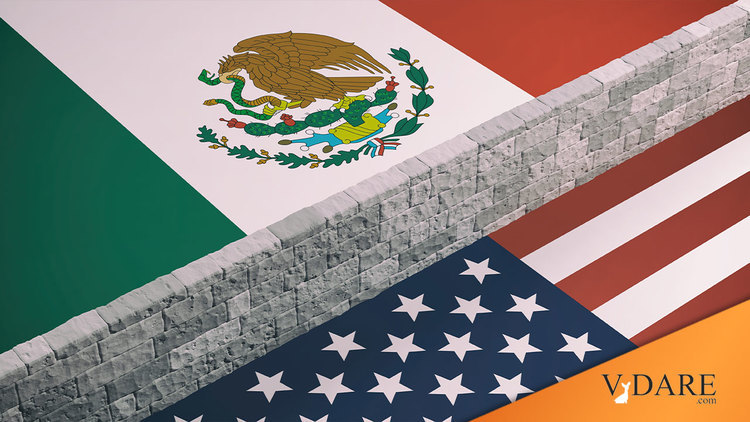


10/20/2004
More than three years after 9/11 U.S. borders are more porous than ever. About 3 million illegals are likely to enter this year. It will be the largest wave since 2001 — roughly four times the number of immigrants that enter legally each year. [Source: Barlett and Steele, "Who Left the Door Open?" Time, September 13, 2004.]
This illegal tsunami is not inevitable. For example, over a 10 -mile stretch of the border near San Diego, arrests of illegal immigrants have plummeted from about 25,000 per year three years ago to 3,000 per year today. Violent crimes have virtually come to a halt in that area, according to the San Diego PD. [Valerie Alvord, "Border fence plan runs into a barrier," USA Today, April 19, 2004
The reason? The government built a fence. Or more precisely, a complex of two 16-foot high steel fences separated by a wide road.
It takes so much time to climb the first fence and cut through the second that apprehension is practically inevitable. Illegals have simply stopped trying to enter along the fenced border.
Of course, the San Diego fence pushed the illegal influx eastward, into the desert. Which is good, because the desert is more difficult to cross. But Arizona apprehensions climbed from 160,000 in 1994 to 376,000 in 2003. Texas apprehensions rose slightly. [Table 1]. California apprehensions were cut in half.
So why not fence off the entire border?
This is what the project might cost:
Conclusion: At $1.7 million per mile, the entire U.S.-Mexican border could be sealed off for $3.3 billion dollars
Juxtaposed to other infrastructure projects, this border fence seems downright puny. The Federal interstate highway system, for example, is about 46,000 miles long. A 1,951-mile border fence would certainly not be more difficult to build than the equivalent length of eight-lane highway. All told there are about 4 million miles of public streets and highways in the U.S. [Bureau of Transportation Statistics, National Transportation Statistics 2003, March 2004. Table 1-5.]
And we could easily afford a fence. For perspective, remember that 3.3 billion dollars represents just:
Federal funding may not even be necessary. The state of California has only 140 miles of the U.S.-Mexican border. Securing that state’s border with Mexico would thus cost about $238 million. Theoretically, California voters could pass an initiative ordering the fence.
California taxpayers would save millions in social service costs currently incurred on behalf of illegal immigrants — I estimated in 2003 that nearly one quarter of the state’s annual budget deficit, i.e. over $9 billion a year, stemmed directly from immigration.
At the same time, a dwindling supply of illegal workers would raise incomes for native Californians — and boost tax revenues.
The fence would quickly pay for itself.
What are we waiting for?
[Number fans click here for tables.]
Edwin S. Rubenstein is President of ESR Research Economic Consultants in Indianapolis.